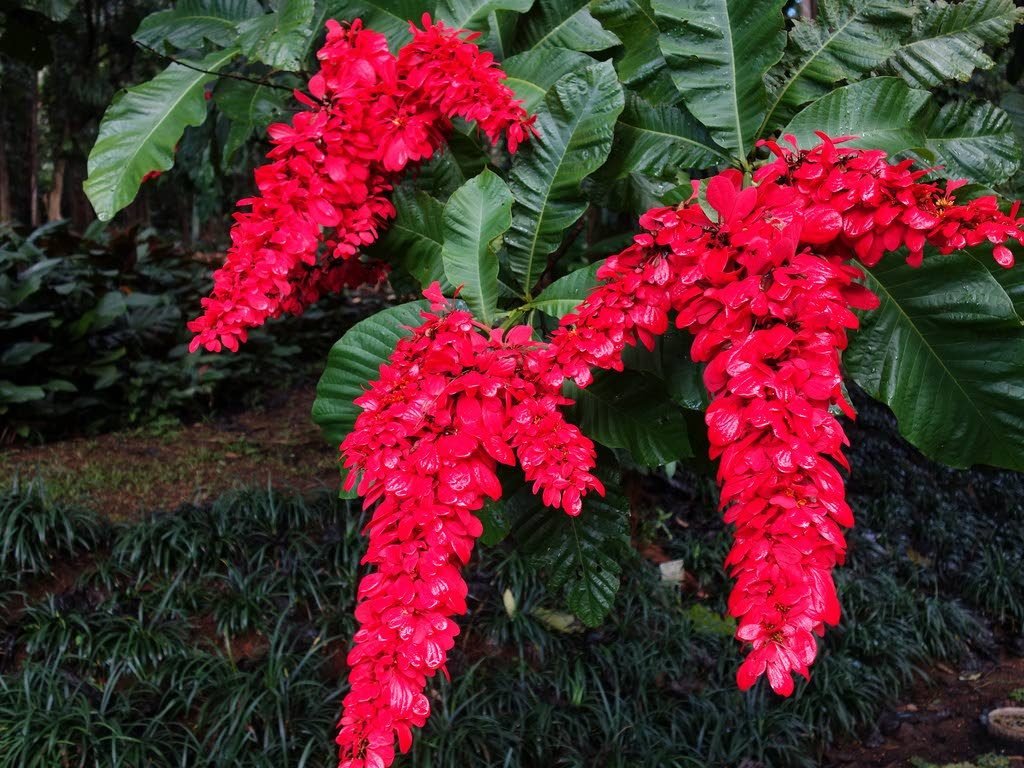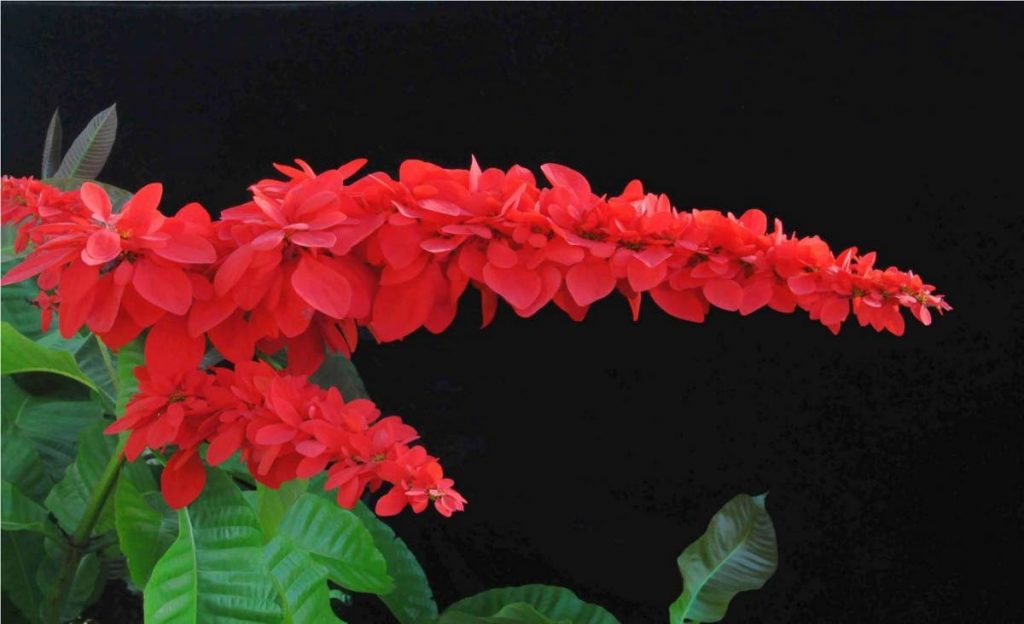Trinidad pride

Prof Emeritus E Julian Duncan
In 1844, the Polish botanist Jozef Warszewicz was sent to Guatemala to join a Belgian company established there. He became an independent collector and supplier of plants to gardens in Europe. He travelled extensively in Guatemala, Panama and Costa Rica, where he discovered a wealth of new plant species. Among these was Warszewiczia coccinea (Vahl) Kl, a member of the Rubiaceae (the family to which plants such as Coffea arabica (coffee) and Mussaenda (ornamentals) belong).
The plant is a native of the New World and is found in a vertical band straddling the equator, from Costa Rica in the north to equatorial Peru and Brazil in the south. This strip includes Trinidad.
In their 1928 publication of Part I Flora of Trinidad and Tobago, Williams and Cheesman, treated the Rubiaceae and recorded the presence of the plant in Trinidad. In addition to a botanical description of the plant, they recorded the names by which it is known locally. These are Trinidad Pride, wild poinsettia and Chaconier. They described the plant as being "a gorgeous plant, forming one of the most attractive features of the flora of Trinidad." (Williams and Cheesman, 1928).

Warszewiczia coccinea cv ‘David Auyong’ the botanical name of the double chaconia---the national flower.
The plant produces a long bloom that is a panicle, a long arching axis, along which are paired cymes–groups of flowers with a common stalk (peduncle). Each cyme consists of 15-20 flowers. The flowers all have five green sepals, five yellow petals which are fused at the base to form a short tube topped by five free lobes, five anthers and centrally, the pistil. In one of the flowers, of each cyme, one of the sepals is transformed into a red, long-stalked petal-like structure, which gives the bloom its attractiveness. Since the cymes are paired along the axis, there are twice as many of these transformed sepals as there are pairs of cymes along the axis.
It is often reported that "it is the national flower of Trinidad and Tobago because it blooms on August 31, which coincides with the day that Trinidad and Tobago became independent from the United Kingdom." This statement can be easily misunderstood. In reality it blooms from February to November, peaking in July. Independence Day thus falls during the period in which it is in full bloom.

There are two legends associated with the more commonly used of the local names, one of which states: "The title is in honour of the last Spanish Governor of Trinidad and Tobago Don Jose Maria Chacon." This appears to be based on the mispronounced Chaconia, and hence misspelled, local name originally given.
The second is based on the recorded name–Chaconier, (Williams and Cheesman, 1928), the name given by the early French settlers. Many of the local names given by them, end in "ier", such as balisier (now pronounced differently) to the Heliconia, and Cocotier (now called cocoyea), to the coconut among others. It is recorded that the red, transformed sepals reminded them of the ribbons of silk or cotton attached to the garments of dancers of the chacone (sometimes rendered chaconne or chacona), a peasant dance popular in Spain and France in the 18th century. In Spain these decorations were called chaconadas.
In 1957, Grace Mulloon (nee Atteck) travelling along the Arima/Blanchisseuse road, in the company of David Auyong, spotted a rather spectacular bloom at the top of a group of Chaconiers.
Realising the importance of their find, Auyong parked the car and at risk to both limb and life, clambered down the steep slope to obtain cuttings which he hoped to use as propagating material.
His attempts were unsuccessful; he therefore solicited the help of Roy Nichols, who worked at the Imperial College of Tropical Agriculture (ICTA). When success was achieved, they returned to the site from which the material had been collected, only to discover that the plant had been cut down in a road widening exercise (Nichols 1963).
A plant was sent to Kew gardens in England where it was confirmed to be a mutant of W coccinea.
Had Auyong not persisted in his attempts to propagate their find, we would never have known the plant. It is recognised to be a mutant of W coccinea and has been given the cultivar name, David Auyong.
The main difference between the wild type and the mutant is that in the former, one sepal of one flower in the group of 20 is transformed, whereas in the latter all the sepals of all the flowers of any cyme are enlarged to some extent and red; in many, the transformation is as extreme as that in the wild type sepal.
The wild type is commonly referred to as the single and the mutant as the double Chaconier. These terms are unfortunate and have led to an incorrect statement recorded in Margaret Barwick’s Tropical and Subtropical Trees: An Encyclopedia.
Referring to Warszewiczia coccinea she states, "The double flowered form lacks a functional pistil and does not produce fruit." (Barwick, 2004). This statement is no doubt brought about by the use of the term double to describe the flower, for in strict botanical terms, a double flower is one in which there is an increase in the number of petals or petal-like structures in place of stamens and/or carpels. Such flowers are thus sterile.
The increase in the number of petal-like structures in W coccinea cv David Auyong is brought about by the transformation of sepals. The stamens are present and functional, as is the pistil. There is no record of the mutant origination elsewhere. Although plants can now be found growing in other countries, these are all clones of the plant spotted by Mulloon.
The inflorescence of the mutant form, which was recently named the national flower, replacing that of the wild type, is truly Trinidad pride.
References
* Barwick, Margaret (2004) Tropical & Subtropical Trees: An encyclopedia. Timber Press, Oregon 484pp.
* Nichols, Roy (1963) ‘A new Cultivar of Warszewiczia coccinea’ Journal of the Royal Horticultural Society Vol. 88 (9), 406-408.
* Williams, R O and Cheesman, E D (1928) Flora of Trinidad and Tobago–Rubiales. Vol 2 Part 1. Department of Agriculture. The Government Printery, Port of Spain 1-48


Comments
"Trinidad pride"